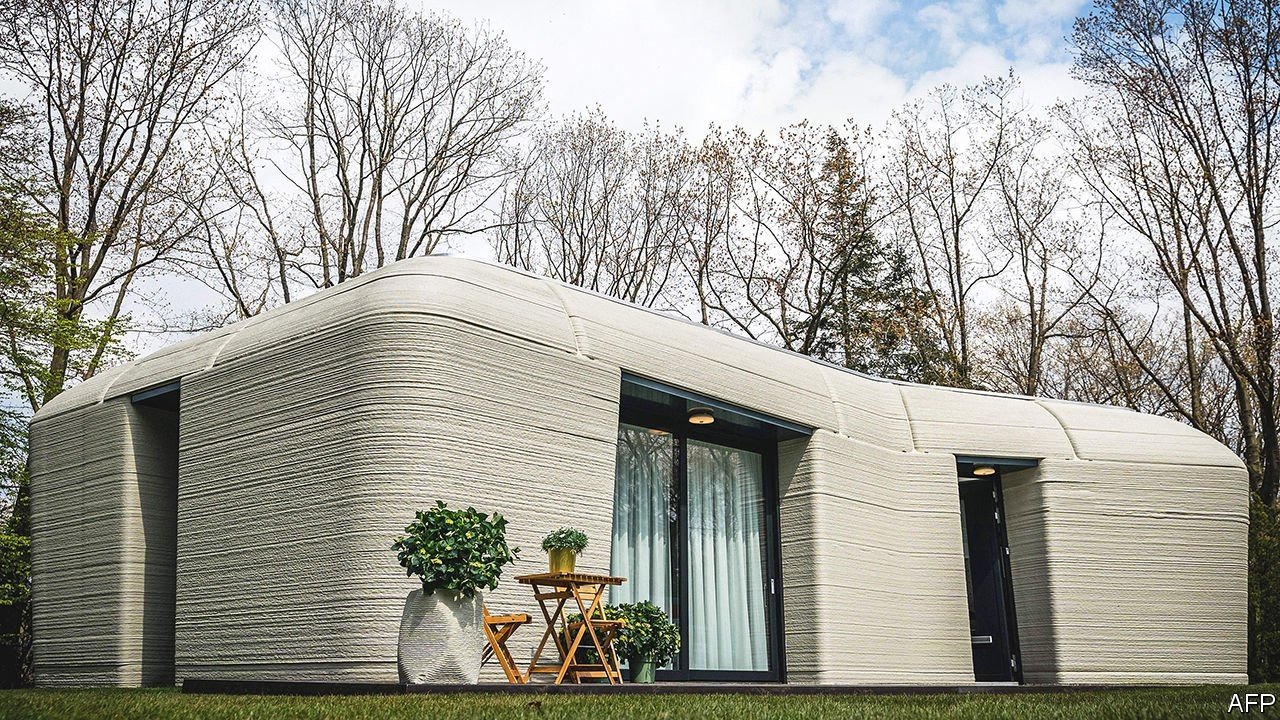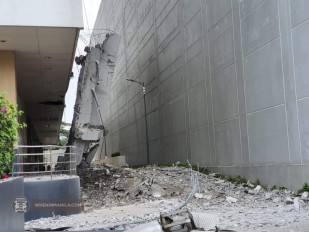Printout homes using new techniques: the rise of 3D-printed houses

Palari Homes and Mighty Buildings company is using a new technique to build houses within 24 hours. They use 3-D printing to prefabricate house components and assemble them in a factory. The last two months 82 3-D printed houses have snapped up in California, while 1000 are in the waiting list.
While 3d printing is not an innovation, as it has been used since1980s for other structures, it is now gathering steam. Palari Homes and Mighty Buildings is using the printers pursuing the same principles as in the past to manufacture the components of the buildings. A layer of material is laid down and fixed in place. Then another layer is put on top of it, then another and then another. By varying the shape, and sometimes the composition of each layer, objects can be crafted that would be difficult or impossible to produce with conventional techniques. On top of this, unlike conventional manufacturing processes, no material is wasted.
The Palari Homes and Mighty Buildings use the printers to print parts such as eaves and ceilings without the need for supporting moulds—as well as simpler things like walls. These are then put together on site and attached to a permanent foundation by Palari Homes’ construction workers.
Not only does 3d-printing allow greater versatility and faster construction, it also promises lower cost and in a more environmentally friendly approach than is possible at present. That may make it a useful answer to two challenges now facing the world: a shortage of housing and climate change. About 1.6bn people—more than 20% of Earth’s population—lack adequate accommodation. And the construction industry is responsible for 11% of the world’s man-made carbon-dioxide emissions. Yet the industry’s carbon footprint shows no signs of shrinking.
Automation brings huge cost savings. Mighty Buildings says computerising 80% of its printing process means the firm needs only 5% of the labour that would otherwise be involved. It has also doubled the speed of production. This is good news; the construction industry having struggled for years to improve its productivity.
The environmental benefits come in several ways, but an important one is that there is less need to move lots of heavy stuff around. Palari Homes, for instance, estimates that prefabricating its products reduces the number of lorry journeys involved in building a house sufficiently to slash two tonnes off the amount of carbon dioxide emitted per home.
The house in question, the first of five detached, two-bedroom dwellings in a project co-ordinated by Eindhoven’s municipal government and the city’s University of Technology, is a collaboration between several firms. The Dutch arm of Saint-Gobain, a French building-materials company, developed the concrete mortar needed. Van Wijnen, a construction firm, built the house, while Witteveen+Bos, a consultancy, was responsible for the engineering. It is being rented out by its owner, Vesteda, a Dutch residential-property investor.
Making the cement involved in projects like this is not, however, a green process. It turns calcium carbonate in the form of limestone into calcium oxide and carbon dioxide, and is reckoned responsible for about 8% of anthropogenic emissions of that gas. A group at Texas A&M University, led by Sarbajit Banerjee, has therefore developed a way to dispense with it.
Dr Banerjee’s new building material was inspired by a project he masterminded some years ago to construct supply roads to remote parts of the Canadian province of Alberta using stuff immediately to hand. The road metal he devised combined local soil with a mulch of wood fibres, and was held together by liquid or water-soluble silicates that then hardened and acted as cement. To build houses he uses whatever clay and rock debris is lying around under the topsoil near the construction site, crushes it into a powder and blends it with silicates. The result can then be squeezed through a nozzle, after which it rapidly consolidates and gains strength, so as to hold its shape and bear the weight of the next layer. The process is thus doubly green. It eliminates both cement and the need to transport to the site, often over long distances, the sand and aggregates used in conventional concrete.
There are limitations to 3d-printed homes. For a start, construction codes need to be tweaked to accommodate them. To this end UL, one of America’s largest certifying agencies, has collaborated with Mighty Buildings to develop the first 3d-printing standard. The guidelines will be included in the new International Residential Code, which is in use in, or has been adopted by all American states except Wisconsin. While this is a welcome boost to a fledgling industry, most governments have yet to come up with country-specific standards. There are also questions about the quality and finish of homes built by 3d printers.
Even so, the direction of travel looks promising. Last year, plans for a 3d-printed apartment building were approved in Germany. This three-floored structure, assembled by Peri, a German construction company, from parts made using printers developed by Cobod, a Danish firm, will contain five flats. Use of the technology is also expanding in the Middle East and Asia. Dubai’s government wants a quarter of new buildings in the country to be 3d-printed by 2030, and is dedicating a district on the outskirts of it eponymous capital to host 3d-printing companies and their warehouses. Saudi Arabia wants to use 3d printing to build 1.5m houses over the next decade. And India’s Ministry of Housing and Urban Affairs wants to use 3d printing to address the country’s housing shortages.
If successful, building by 3d printing is likely to spread beyond housing. Opportunities also exist in warehousing, offices and other commercial buildings. And beyond earthly structures, NASA, America’s space agency, is exploring the use of 3d printing to build landing pads, accommodation and roads on Mars and the Moon. There is no soil on those two celestial bodies, just shattered rock called regolith. Dr Banerjee’s group, which is working with nasa, says its approach to 3d printing functions just as well with this material. “We would ultimately like to have property on Mars and the Moon but we’re not going to be able to take concrete up there with us,” says Dr Banerjee. “We’re going to have to work with regolith.”
Source: economist.com
Want to read more like this story?

The world’s most exceptional 3D printed homes
Apr, 10, 2024 | News3D printing technology is a revolution at the construction sector, enabling builders to fabricate h...

Dubai plans to build the world's first 3D-printed mosque
May, 03, 2023 | NewsDubai aspires to build the world's first 3D-printed mosque, that will cover an area of 2,000 square...

Melbourne: the first 3D-printed house in southern hemisphere
Jan, 18, 2022 | NewsThe first ever 3D-printed house in the southern hemisphere has been built in a Melbourne manufactur...

New solution promises 90% cost reduction in concrete 3D printing materials
Dec, 22, 2021 | NewsConcrete 3D printing of building shells has grown considerably in the last few years, with more and...

First 3D-printed building in Dubai
Jul, 29, 2019 | NewsThe first building realized via 3D printing technology in Dubai will be developed by Emaar Prop...

The first 3-D-printed, two-story home is under construction in U.S.
Jan, 12, 2023 | NewsA 3D printer is taking home building to a new level. The enormous printer weighing more than 12 ton...

1st 3D Printed Office Building
Jul, 01, 2015 | NewsThe United Arab Emirates announced that it will proceed with the creation of the first building to b...

A 29-meter-long 3D printed bridge is under construction in the Netherlands
Apr, 05, 2021 | NewsThe world's longest 3D printed pedestrian concrete bridge is currently under construction in the...

A 3d-printed house to withstand strong earthquakes was built in 26 hours
Oct, 25, 2023 | NewsA team in Guatemala used 3D printing technology to construct an earthquake-proof house within a rem...
Trending

Spectacular interchanges around the world

Eshima Ohashi bridge in Japan designed for the brave!

Building partially collapses in Philippines: 2 people injured

Concrete Component Design Using STAAD.Pro

Precast and prefabricated concrete structures: What is the difference?



